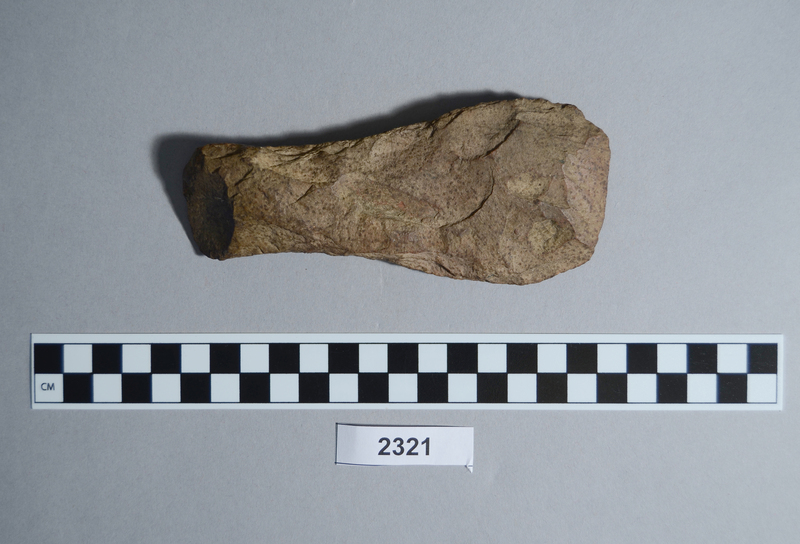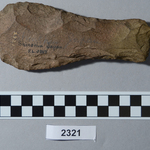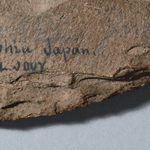| Object Number | 2321 |
| Current Location | Collections Storage |
| Culture | Late Paleolithic (uncertain) | Jomon (uncertain) | Japanese |
| Provenience | Japan | Shinshiu |
| Period | Late Paleolithic (uncertain) | Jomon (uncertain) |
| Date Made | Late Paleolithic, Japan - Jomon |
| Section | Asian |
| Materials | Stone |
| Technique | Flaked | Chipped |
| Description | Adze. Elongated shape. Bifacially retouched. End is smooth and angled. Brown speckled stone. Unground adzes may have been used as a hoe for digging and harvesting roots, bulbs and other wild plants. They could also have served as a woodworking tool. They were made from pebbles which were carefully selected for their shape. The cutting edge was created by chipping at either one or both sides to form a sharp edge. The opposite end is usually thicker. This type is associated with the Late Paleolithic Period. However, rough stone tools also appear in Jomon sites in a variety of shapes including axe shaped, triangular and bowtie-shaped forms. Thus this form may be either Late Paleolithic or Jomon Period. |
| Credit Line | Gift of Francis C. Macauley, Esq., 1890 |
Report problems and issues to digitalmedia@pennmuseum.org.




